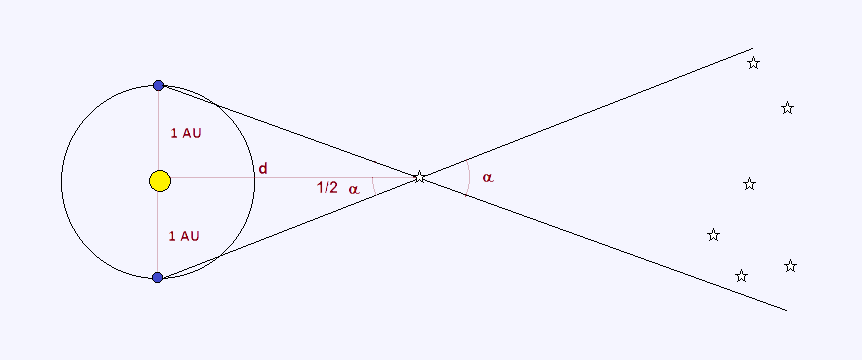Parallax
Dual perspective allows to get a general sense of how far away objects are. Let's see how astronomers take advantage of this idea.
An astronomer is trying to measure the distance to a star from Earth. Seen from opposite sides of Earth's orbit (for example, on January and July), this nearby star shifts its position when compared to a pattern of more distant stars. This apparent change in direction of the remote object due to a change in vantage point of the observer is called parallax (triangulation).
Through this method we can obtain the distance of a star from Earth.
IMPORTANT UNITS
| 1 AU | Astronomical Unit | 1,5 ∙ 10^8 km | |
| 1 pc | Parsec | 3,6 ly | |
| 1 ly | Light year | 9.5 trillion km |

Using trigonometry on the previous graph we can state that:
